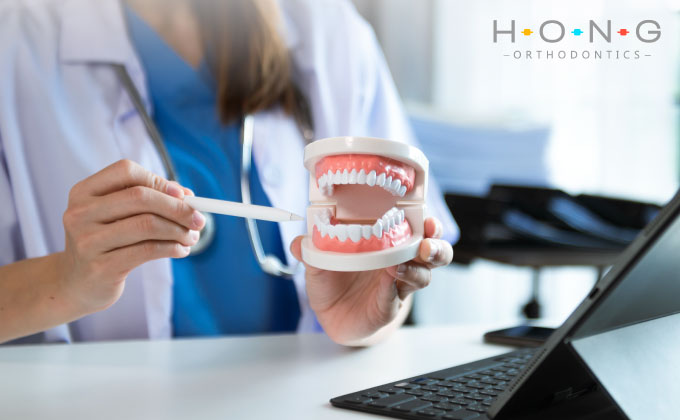Learning About Orthodontic Malocclusions You Can Fix With Orthodontics

You may go to the orthodontist thinking that achieving a beautiful smile is the goal, only to find out that straight teeth actually have more to do than look good.
A straight smile is a healthy smile. It does not mean you can’t have healthy teeth if your smile does not meet the media canon or that having aligned teeth is all you need to have good oral health.
Teeth have functions to perform as part of our bodies. They are necessary to speak, eat (including swallowing), and hold facial structures. In the same way, your bones can’t do their job if they are in the wrong position, and your teeth can’t do all the above if they are misaligned.
Another aspect in favor of straight teeth is they allow proper oral hygiene, which you know is paramount for oral health. Misaligned teeth create nooks that are hard to reach, and bacteria hide inside, growing to cause cavities. Poor oral hygiene can lead to dental calculus, gum disease, tooth infections, bleeding, and severe pain.
Of course, striving for a beautiful smile is part of Orange orthodontic treatment, but it is because it’s a matter of health.
Why Do Modern Humans Have Misaligned (Crooked) Teeth?
We often hear that our body is perfectly designed even with its flaws. So it’s natural you question misaligned teeth, why we have crooked teeth, and if they are natural, why do we have to correct them?
The reasons for developing crooked teeth and other types of misalignment vary a lot. We have genetics, nutrition, bad oral habits, injuries or trauma, and tooth loss.
Conditions such as crowded teeth, overbites, and underbites can be hereditary. Interceptive treatment can help correct them before they turn into a problem for the patient, but it’s necessary to visit the orthodontist as late as seven years of age.
Malnutrition during infancy can turn into poor growth and development of teeth, causing dental misalignment. Poor hygiene of baby teeth and adult teeth can lead to tooth loss, causing the surrounding teeth to shift to cover the space.
Bad oral habits, even during infancy, can cause serious misalignment. Thumb-sucking can alter the shape of the palate and push your upper jaw until it covers the lower teeth. Thumb-sucking, as well as the use of pacifiers after age three, can have these effects on dental structures.
What Is Malocclusion?
Orthodontists have a general name for teeth misalignment and three different classifications for each case. Teeth are a system, and the term “crooked teeth” does not comprehend the extent of the issue.
As part of a system, each tooth has a role to play in the functioning of our mouths, and position is a key part of this system. When a tooth does not occupy its place because it’s crooked, missing, or shifted, the rest of the surrounding teeth suffer the consequences.
For instance, if the crooked tooth is in the upper jaw, its peers in the lower jaw will most likely shift to adjust. Our teeth structure is designed to close perfectly. That’s why the name for this problem is malocclusion.
Malocclusion issues cause mandible pain, gum disease, headaches, and trouble biting.
What Are the Different Types of Malocclusion?
Experts classify malocclusions according to their level of severity, starting with low. We find:
- Mild overbites: The most common type.
- Moderate to severe overbites: The facial structure modifies.
- Mild to severe underbite: Also modifies the facial structures.
What Are the Different Malocclusion Classes?
Studies organize each typology into classes.
- Class I Malocclusions: The mild overbite. The upper teeth slightly cover the lower teeth line.
- Class II Molocclusions: Severe overbites or retrognatism. The upper jaw completely covers the lower teeth.
- Class III Maloclussions: Underbite or prognatism. The lower jaw protrudes over the upper jaw.
There are more levels inside each classification since teeth can shift in so many different positions, and one typology would be insufficient classification.
Can Invisalign Solve Malocclusions?
Despite the million differences between metal braces and Invisalign, clear aligners are a perfectly effective method for a teeth straightening treatment. Invisalign can correct almost all malocclusion types, except only for severe cases.
Your orthodontist will judge if you are a candidate for Invisalign clear aligners or if braces are more adequate.
Celebrities Also Have Crooked Teeth (Malocclusions)
Dental malocclusions are super common; you are not alone. Even celebrities have crooked teeth and are patients of orthodontic treatment. Let’s list some names:
- Steve Buscemi, Keira Knightley, Nick Jonas, and Charlie Sheen enter the group with their crooked teeth.
- Vanessa Paradis, Anna Paquin, and Lindsay Lohan have spacing problems on their upper teeth.
- Miley Cyrus, Tom Cruise, and Melanie Chisholm all used to have cases of overbite and shifted teeth.
Invisalign Treatment, Irvine
If you search “Invisalign, Irvine,” you will find Hong Orthodontics as one of the top 3 options.
Don’t leave your dental health for tomorrow, and schedule a consultation today!

